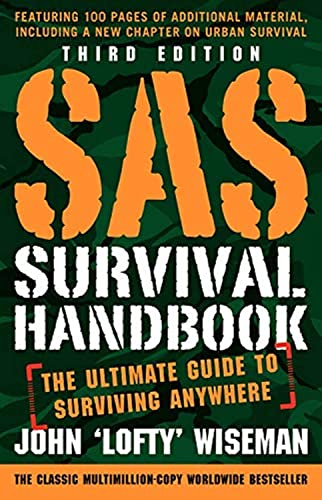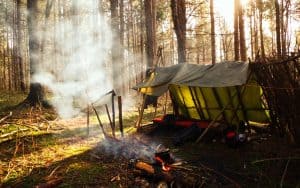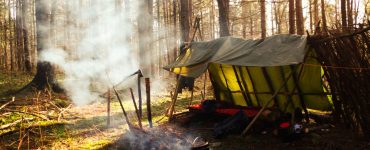You suddenly found yourself lost in the midst of wilderness, and you are left with no choice but to fend for yourself. Do you have what it takes to keep yourself protected from harm and danger? This wilderness survival guide will help ensure that you can make it out safe and sound.
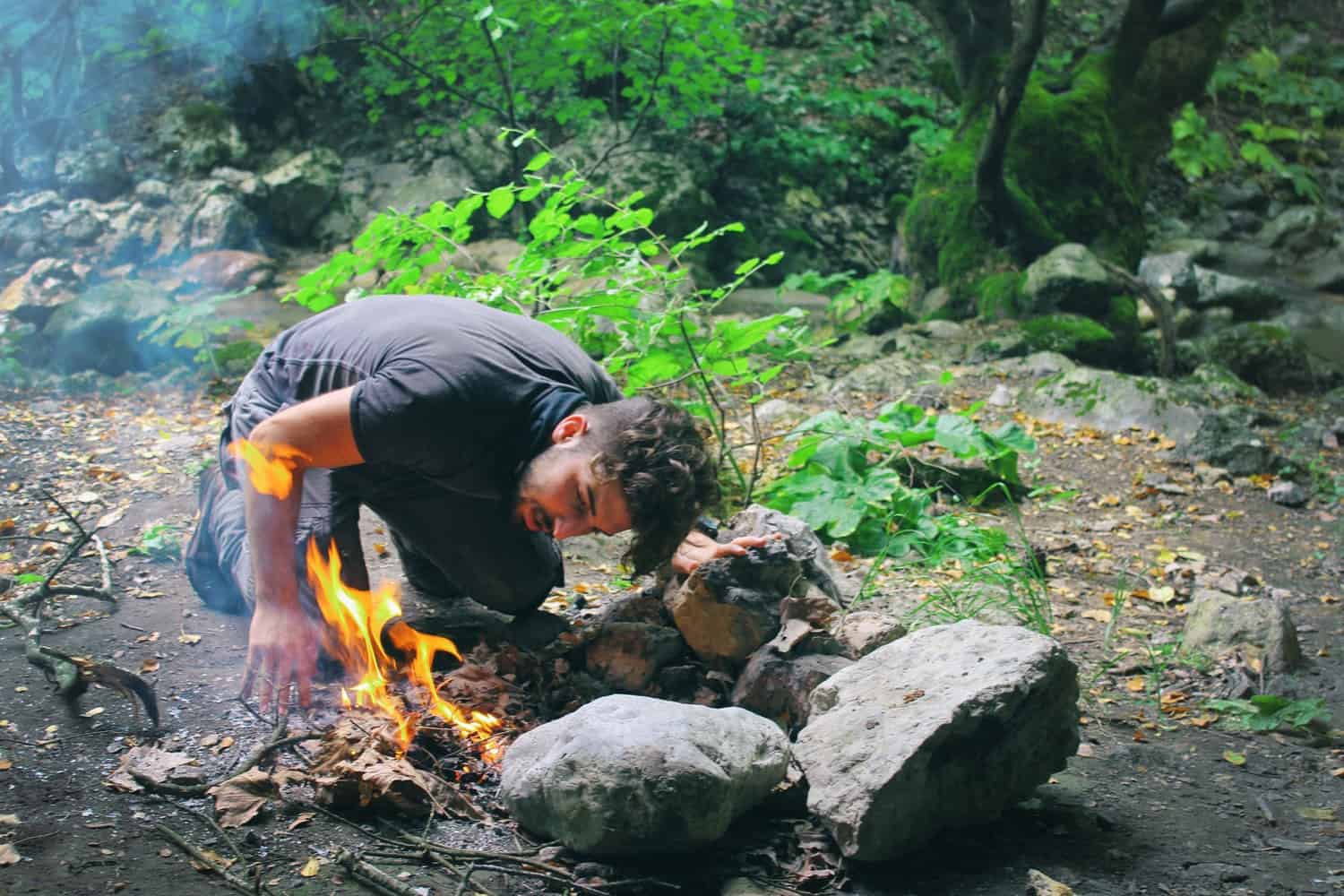
The Mind of Survival

The art of outdoor survival doesn’t only start with lighting a fire or building a shelter. Before any of these two, you need to develop first the mindset of a true survivor. Try to look for a real life survival story, and you will discover that these survivors have the same mental traits which let them endure the difficult situations they were in.
Developing a survivor’s mindset is extremely essential, and below are the top 5 characteristics that you will need:
Positive Attitude
Just because almost all survival resources are preaching about the importance of having a positive mental attitude doesn’t mean that you have to think of it as another cliché. A positive mental attitude is a real necessity. In fact, this is a crucial survival priority when you find yourself in the midst of adversity, and is among the most vital skills you should master. This is also among the most difficult skills to master yet it will be worth the trouble. Practice this attitude daily and you will be ready if you ever find yourself lost in the wilderness.
Motivation
What is the one thing that motivates someone to stay alive even when things have gone wrong? A lot of survival stories discuss the devotion of the survivor to their religious belief or the higher power for providing hope and motivation. Other survivors have also discussed their intense desire of returning to their loved ones, friends, and family. What do you think will motivate you for staying alive during a survival emergency? This is for you to decide as it differs for everyone.
Mental Toughness
This is not about physical prowess, stamina, pain tolerance, or the number of calluses you’ve got. Mental toughness is about your will’s strength as well as your mind’s toughness. For you to be mentally tough, you need to suffer through the insufferable, tolerate the intolerable, and overpower your desire to give up and all your weaknesses.
Adaptability
Survival and adaptability always go hand in hand. Consider the survival of animals and plants. The ones which fail to adapt to the changing environment didn’t survive. The ones that changed and evolved managed to survive. You need to be able to adapt to all the changing environments, situations, and event. You should recognize things that you should continue and those that should be abandoned.
Work Ethic
Your work ethic is also a major factor in your survival mindset. Being in a difficult experience usually teaches people to work harder and better the next time, assuming that there is indeed a next time. A true survivor is one who has a strong work ethic, someone who sticks with the job until this is completed and finished. Your strong work ethic could surely go a long way to make up for things that you weren’t able to entrust to luck alone.
Steps for Survival in the Wilderness
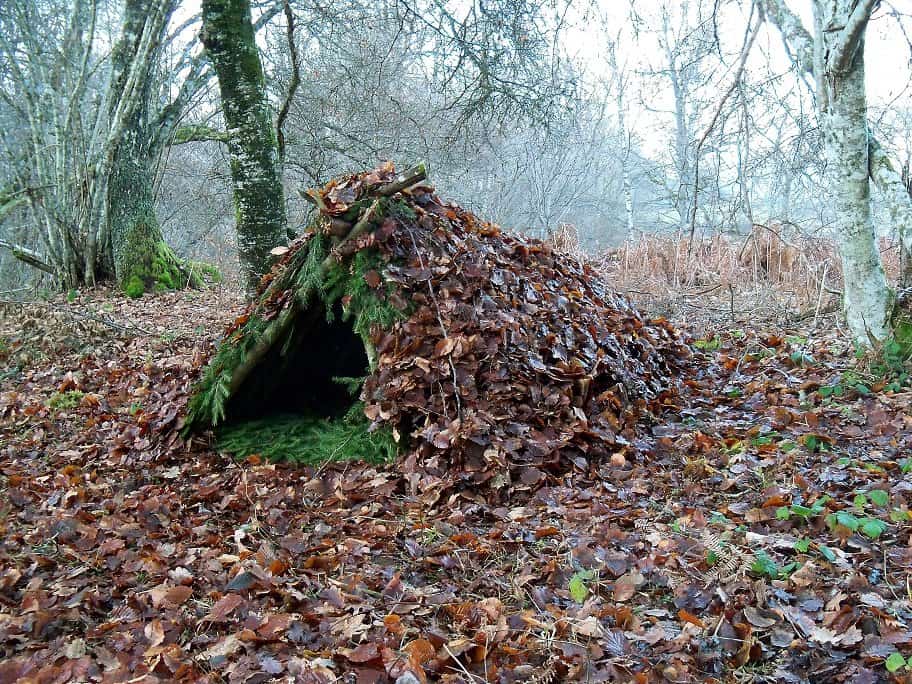
If you ever find yourself trapped in the wild, it is a must that you know your top priorities to ensure that you won’t be facing the worst case scenario:
Day 1
Build your shelter on the first morning and make its warmth comfortable enough depending on the climate on the area you are in. Your shelter should be warm, dry, and has enough space for storing things. Ensure that your shelter is also reasonably near a water supply. While searching for shelter materials, use the chance to gather firewood to make fire at night.
You can make fire with the use of a primitive bow drill or even a hand drill that has thumb hole strings to lessen consumption of energy and make it easier to get coal. Before day one ends, focus on making several traps near high traffic spots for small game and pack rate dents.
Day 2
Start the morning by re-stoking the previous’ nights fire and check your traps if they were able to catch something you can have for breakfast. Go back to camp and start either improving the shelter while the weather is still cool or processing the trapped game. Building your shelter is among the most labor intensive aspects of survival and you have to do this when you will be using the least calorie amount.
Proceed to making several simple traps and some complex ones for bigger game. If you are near a water source like a stream or river, make some fish traps since these preys are the easiest to catch. Your second day must focus on food gathering and shelter improvement. Make sure you stay hydrated as well.
Day 3
On the third day, you must have several traps set out that produce food. It is your primary focus until you have enough sources of food generation to give you adequate fresh meat you can eat on hand, as well as enough extra to start storing extra edibles, dried meats, and others. You can start putting these back for your following move. When you are out, see to it you gather materials once they get available. Never wait and return as this will just waste more calories.
Day 4
Once the fourth day comes, you will be more used to the situation and you must already provide yourself with some calories without losing a lot of weight. Continue improving your situation through adding new sources of food generation and using the resources in the area to be ready for anything that might come. You can also start making things such as tools and drying racks to make your tasks easier.
Being lost in the wild doesn’t have to mean that you will simply give up. By being wise and alert, you can definitely make it out successfully and safely.
Best Wilderness Survival Books
A handful of wilderness survival books are head and shoulders above the rest of the pack, the kinds of books that can give you the fundamentals and foundational knowledge and skills you need to feel a lot more comfortable when things go sideways and you are off the beaten path.
Start with these wilderness survival guide books.
Your Survival
Written by Doctor Bob Arnot and Mark Cohen, this is considered by many in the survival world to be the “bible” of staying alive when things go to pieces. Packed to the gills with expert advice and useful checklists, and also includes a 90 minute disaster preparedness video that you’ll want to watch, too.
Fun Outdoor Quiz
- Bob Arnot (Author)
- English (Publication Language)
- Hatherleigh Press (Publisher)
Last update on 2024-04-23 / Affiliate links / Images from Amazon Product Advertising API
How to Stay Alive in the Woods
Written by Bradford Angier, don’t be put off by the fact that this book was originally written in 1956. The information contained within remains as relevant today as it did more than half a century ago.
- Angier, Bradford (Author)
- English (Publication Language)
- 288 Pages - 03/02/1998 (Publication Date) - Touchstone (Publisher)
Last update on 2024-04-23 / Affiliate links / Images from Amazon Product Advertising API
SAS Survival Guide
A best-selling survival book written by a former member of the British Special Air Service, it is one of the more modern classics in the survival book arena and certainly one you’ll want to have close at hand. It focuses on using more modern tools and technology to survive and is particularly useful these days.
- Wiseman, John 'Lofty' (Author)
- English (Publication Language)
- 672 Pages - 11/11/2014 (Publication Date) - Mariner Books (Publisher)
Last update on 2024-04-23 / Affiliate links / Images from Amazon Product Advertising API
Essential Skills and Techniques to Master
There are lots of survival techniques out there, but no matter what specific one is being discussed, there are five basic outdoor survival skills that a person venturing into the great outdoors need to understand and must be well aware of their potential use and need. Remember that this is only a brief outline and not a complete explanation of all the items and requirements needed in every category.
Among the most crucial elements to survival is found right between your ears, and that is your brain. But out of all survival techniques, not panicking is the most important one. Make sure you use your wits then practice every element of the following basic survival skills before the need to rely on these comes.
Fire
Fire is no doubt the king of all survival methods. Fire could cook food, purify water, offer warmth, comfort, and light, signal rescuers, help keep the predators away, and is also the most welcomed companion and friend you could ever have. Being a survival technique, this is the one that is most essential. Anyone venturing into the outdoors must have at least two ways of starting fire, one of which is with the person all the time, and the second one with the gear.
Several small fires offer more heat compared to a single big fire. You can collect firewood you can use at night and collect the similar amount again. Conserve fuel through producing a star fire wherein the ends of big logs meet only the fire push inward since more fuel is required. Create a reflector from the space blanket on the shelter’s back wall to reflect the heat of the survival fire to your back. You should site between the back shelter wall and the fire.
Shelter
Shelter is another survival technique that can keep your body protected from excess exposure from the cold, sun, rain, wind, or snow. Something which adds or takes away to the overall temperature of your body could be your potential enemy. Your initial line of shelter protection is your clothing, Make sure you are wearing the right clothes that fit the environment you are in.
See to it that you have a hat with you all the time. Try to keep the layers nearest your body as dry as possible. The layers can trap air and these will be warmer compared to a single thick garment. Never use up your energy for building a shelter if nature already offers one.
You could practice forming a quick lean to shelter in the event that you fail to locate your campsite. Never wait until you have to make one. You can use your space blanket for preventing dampness, insulating your shelter, or wrapping around yourself in a squat or sitting position to focus the core heat of your body.
Signaling
It’s unique among other survival techniques in that signaling provides you the ability and means to alert any potential rescuers that you’re in need of help. Flashing light, fire, flags, bright color markers, and whistles all will help you be found. Fires in triangular form are a known distress signal. Bank your signal fires carefully to prevent igniting the surrounding areas.
Use regular signal mirrors when you can see people or a plane in the distance. Use the emergency strobe light during night time to help attract the attention from people that might be in the area. Create smoky fire with the organic materials over the fire during day time to attract some attention. Lay out ground and air signal in the open field, SOS from logs, rocks or colored clothing, whatever you see in the background. Majority of the search and rescue teams use aircraft as a sighting method.
First Aid
It is a survival technique isn’t just the basic medical needs, but also it’s a primary way to survive. Remain calm, never panic, and do what you need to do to take care of yourself. Keep STOP in mind. It means Sit, Think, Observe, and Plan. It’s considered as the most intelligent thing you may do once you realize you’re stranded or lost.
The most crucial element is keeping your brain functioning rationally, which is the basic survival first aid. Analyze your requirements before each trip, carry small personal kit, and make a medical checklist. Almost all survival situations need only dressing for bruises, small cuts, and personal medication requirements, see to it that you know how to use it and what you have with you. Prevent hypothermia through insulating yourself in the space blanket.
Food or Water
These are crucial towards your survival. Try drinking only in the cool of evening. You could live up to 3 days without water. Never eat plants you don’t know and don’t drink urine. Assume that you’ll need extra water and food once you plan your trip. Pack candy and energy bars in your pockets always.
If necessary, boil water for ten minutes plus a minute for each 1000ft above sea level. Strain the water through the handkerchief to get rid of the big particles. Don’t wait until you’re without water to collect that. Have poly zip bags to store and collect water. Don’t eat wild berries that you’re not sure of what they are. You may catch rain water in your own space blanket through laying it out in the trench.
Finding Wild Edible/Medicinal Plants
Foraging is a huge piece of the puzzle if you want to be truly self-sufficient and have the skills to survive out in the wild, but figuring out which wild plants are edible – and which ones aren’t – as well as which can be used for medicine is nowhere near as easy as it might seem on the surface.
For starters, you’ll want to get your hands on a couple of good books that revolve around the skill and art of foraging.
- Vorderbruggen, Mark (Author)
- English (Publication Language)
- 224 Pages - 04/12/2016 (Publication Date) - Alpha (Publisher)
Last update on 2024-04-23 / Affiliate links / Images from Amazon Product Advertising API
- Thayer, Samuel (Author)
- English (Publication Language)
- 368 Pages - 05/15/2006 (Publication Date) - Foragers Harvest Press (Publisher)
Last update on 2024-04-23 / Affiliate links / Images from Amazon Product Advertising API
Above are two of the best books out there to help you learn the fundamentals of foraging. They are a great place to start.
YouTube wilderness survival guides can be of huge help as well, though you’ll want to try and find online mentors that provide detailed information for the types of wild plants you’ll likely find in your local area.
Really tried to figure out which are the most dangerous species of plant in your area before you head out into the wild, learn to look for the habitat that foraging plants usually grow in, and always tried to discover what the “companion plants” that grow near these wild food sources and medicines are to better locate them, too.
Top Survival Hacks
Survival skills are all about using the things you have on hand to keep yourself and your loved ones safe when everything else is crumbling down, and a handful of hacks – like the ones we include below – may one day be the difference (quite literally) between life and death.
Start Fires with Doritos
Believe it or not, Doritos (or any kind of corn chip, for that matter) are incredibly flammable and make for great firestarters in a pinch. Cluster a handful of these chips together before you set them ablaze and you’ll have a blaze going in no time.
Crayons are Great Candles
You can get about 15 minutes of candlelight out of a traditional crayon after you have lit on fire, making them a great solution for a little light and a little heat in a pinch. It’s not a bad idea to warm one end and then stick it to a surface (allowing the wax to harden before you like the other end) to make them a little more convenient to use, though.
Soda Can Jet Stove
If you need a little jet stove while out in the wild a soda can that has been sliced in half and then perforated at the top can work in a pinch. Put the fuel underneath the soda can and use the top service to do your cooking and you’ll be good to go!
Outdoor Survival Gear
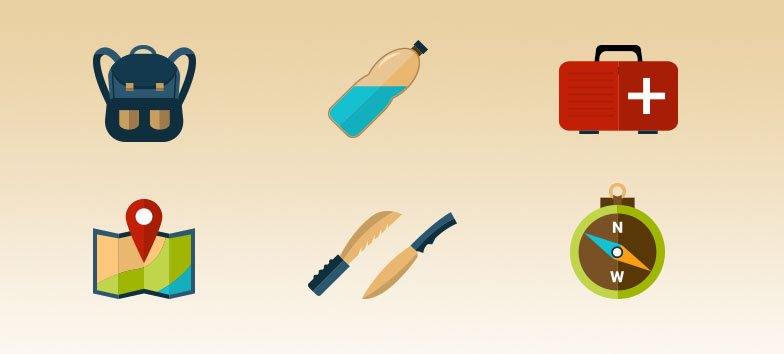
Having the right survival gear is crucial for anybody wanting to live a life of outdoor adventure. Whether you are a regular in wilderness, first-time explorer or weekend warrior, if you do not have the right outdoor survival gear, you are actually asking for trouble. So, make sure to have these survival gear essentials:
Survival Knife
It has a lot of uses that it’s an absolute essential for any outdoor adventure. It is your important piece of survival gear to open packages, cut rope, build shelters, and may come in handy when using first aid kits and starting fires.
Survival Backpack
It is crucial that you get a great survival backpack for when you are out on your adventure. Yet, what exactly do you mean by this kind of backpack? It should carry enough content, must be waterproof, and should give you comfort throughout your journey.
First Aid Kit
Having a first aid kit may turn an potential survival emergency into minor setbacks. If you don’t have a first aid kit with you, you aren’t giving enough respect to your surroundings. First aid kit is an important thing to turn survival situations into an inconvenience and it could be difference that will help you save your life.
Rope or Cord
Rope might not be a crucial gear for camping, yet it’s definitely useful and once you find yourself in a place where you have to construct any survival shelter, it might be the survival gear that would end up saving your life. Carrying cord also provides you the means for repairs should have some shelter problems, find yourself in climbing situation, need to repair tents or even if the things might get bad and you have to lay the trap and hunt for dinner.
Survival Blanket or Bag
If you are stranded in an isolation or waiting to pick up after the conditions and injuries are against you, it’s the piece of survival kit that will give you the shelter from elements and help you keep your heat and energy once it matters the most.
Whistles and Some Signaling Devices
Do you think whistles are only for children to annoy their friends or parents? Well, many outdoor survivalists have used whistles before and helped them survive after a tragic situation. Like the one that was used by Rose in Titanic after Jack died. The best thing about whistles is that they are very lightweight and they are easy to pack and very small.
Therefore, it is essential for a survival situation.
If you cannot walk and have a bone break, if you’re in need of any type of immediate help or have a bad wound and your phone does not have signal, a sharp blow on your whistle could be the easiest and simplest way to save your life and attract the attention of other people around you.
Aside from whistles, you might find a survival mirror a useful signaling device. It is easy to use, which come with some features like flash SOS that’s useful when you are in an isolated place without some explorers likely come to your trail. If you don’t have those signaling devices, you might want to make a fire instead. It is also a good signal to draw attention from other explorers.
Compass
Most wanderlust-driven people have tattooed compass on their necks and yes, you need to bring a compass during your outdoor adventure. It may be a useful piece of your survival gear if you are knowledgeable on how to use this properly and effectively. Take note that you need an actual compass instead of just getting a tattoo of this to save you. There are different brands of compass and maps you can find in the market today.
Just choose the one that is cheap and made with quality in mind to ensure that it’s working and would give you the right information you need once you head through your journey outdoors. If you have a compass as one of your survival outdoor gear, you can be assured that you will be able to navigate your way and you won’t get lost, especially if you know how to use it properly.
Water Filters
Water is (obviously) such a huge part of survival – something you don’t need a wilderness survival guide to know – and you’ll need plenty of it not only to drink but to handle your personal hygiene and to cook with, too. The right water filter makes a world of difference when it comes to surviving when traditional water sources aren’t available.
- Protects against 99.999999% of bacteria (including E.coli, Salmonella); 99.999% of parasites (including Giardia and Cryptosporidium); 99.999% of microplastics, silt, sand, and cloudiness
- Ultralight and durable, the LifeStraw weighs less than 2 ounces (46 g) so you can pack it anywhere
- Long-lasting membrane microfilter will last up to 1,000 gallons (4,000 L) of water, that’s enough drinking water for an individual for over 5 years
- Be prepared with the ultimate survival tool, the LifeStraw has an unlimited shelf life and has been tested all over the globe to face the harshest conditions
- Your purchase has impact: one purchase, one child, one year of safe water
Last update on 2024-04-23 / Affiliate links / Images from Amazon Product Advertising API
In-line water filters are small, lightweight, and compact and great when you are looking for something that can handle your personal water needs. Hand pump water filters or gravity fed water filters are little larger and more robust, the kind of thing you’d find at your survival camp, but can filter a lot more water – a lot more efficiently – and are just as useful.
Firestarter/Waterproof Matches
The average person can survive for about three weeks without eating anything and about three days without drinking any water – but spend more than three hours outside of your core body temperature and things get very dangerous in a hurry.
It’s of the utmost importance that you have plenty of firestarter solutions on you when you are serious about survival preparation – but you’ll also want to have multiple different firestarter options for built-in redundancy, too.
Firestarter materials, firestarter sticks, waterproof matches, lighters, and even a flint and steel are all just a handful of basics you’ll want to keep in your survival kit to make sure that you can build a fire anywhere and everywhere you might find yourself stranded.
Practice with these firestarter solutions, too, so that the first time you use them isn’t when life or death
- Trustworthy No Matter the Forecast: Our meticulously designed magnesium ferro rod is your upgrade from the traditional flint & steel. It creates fire starting with over 16,000 strikes at a scorching 5,500°F. Whether caught in rain, snow, or wind, rely on this indispensable kit to provide warmth, cook meals, and signal for help. Its unmatched reliability makes it a must-have in every adventurer's pack
- All-in-One Survival Tool: Beyond its primary fire-starting feature, it incorporates a precision compass for navigation, a 150dB whistle for emergency signaling, a robust steel scraper, and a 450 LB 8-core paracord for any situation & rod.
- Built to Stand the Test of Time: With materials chosen for their resilience and longevity, our tool set boasts a high-quality build that withstands the toughest environments. Its solid construction ensures it remains a dependable companion on your wildest adventures, from the damp depths of rainforests to the dry expanses of deserts.
- Compact Convenience: Our fire starter's design epitomizes the essence of portability without compromising on functionality. Weighing less than 2 ounces and measuring just 5 inches in length, it's engineered to fit seamlessly into any pack or pocket. The sturdy handle enhances grip and usability, making it easy to carry and use on the go. Our lightweight tool ensures you're always ready to spark a flame or find your way.
- The Perfect Emergency Kit: Each pack contains two meticulously designed fire starters, doubling your preparedness for any outdoor scenario. It's a comprehensive kit that prepares you for the unexpected, ensuring you're well-equipped to tackle the challenges of the great outdoors with confidence.
Last update on 2024-04-23 / Affiliate links / Images from Amazon Product Advertising API
Sleeping Bags
High-quality sleeping bags are more affordable today than ever before, featuring the kind of technical materials, insulative properties, and lightweight form factors that sleeping bags of just a decade or two ago were never able to offer.
As any wilderness survival guide will tell you, you’ll want your sleeping bag to be as lightweight but as well insulated as possible, capable of handling the coldest temperatures that you may face, and designed to withstand and resist water, wind, and weather.
The shape, size, and color of the sleeping bag you choose is entirely up to you, but it’s never a bad idea to pick brighter colors or more reflective covers in a survival situation to double as a signaling device.
Conclusion
All of these things might be needed to help you stay alive and be comfortable as you get rid of yourself from the situation. It must be clear that these two terms have different meanings yet that they could absolutely merge into one.
It must be made clear that surviving as presented in scenario above takes less experience and energy than venturing into the desert for several days with nothing more than the clothes on your back and maybe a canteen and knife. The latter is basically an example of primitive living exercise and the necessary skills to do this can’t be learned through reading about them. They should be practiced once you’re proficient enough to use skills to stay alive.


![[Your Survival: Protect Yourself from Tornadoes, Earthquakes, Flu Pandemics, and Other Disasters] [Author: Arnot M.D., Dr Bob] [October, 2007]](https://m.media-amazon.com/images/I/51FTG6zHfCL.jpg)

